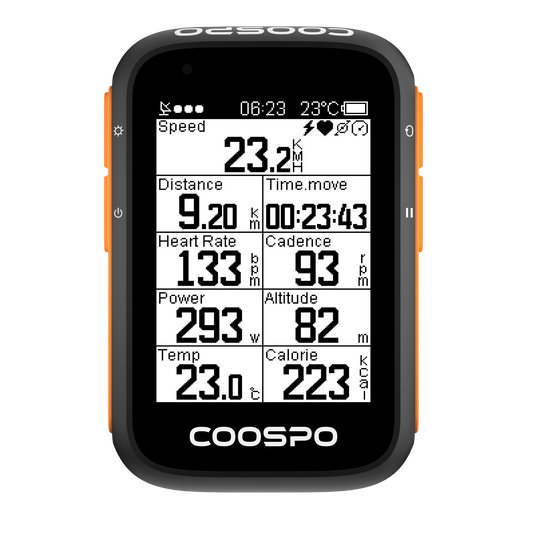Why Base Training is Essential for Every Runner?
Good race training doesn't start when you begin speed workouts — it starts weeks or months before, when you build up your basic running fitness.
Building a training base is like building a house. You can't just put up walls and a roof on sand. You need a solid foundation first. The same goes for running — a strong base supports everything else you'll do in training.

Building a solid foundation before you start training will help you complete your race feeling strong and proud, no matter which race you choose. Here’s what a good running base looks like and how to create one based on your experience and upcoming race goals.
What is a running base?
A training base is the basic fitness level a runner has before starting any training program.
This isn't only for beginners who are trying training for their first race. Even experienced runners need to build a solid base before increasing their mileage. You can think of it as a bridge that connects your running from one race season to the next.
When you work on building or keeping a running base, you're improving two main things: your cardiovascular system, which means making your heart and lungs stronger for tougher workouts in your race training, and your muscular fitness. This is important because running can be tough on your body, and you need to gradually increase your strength to handle the demands of running better.
Regular running helps make your heart stronger, so it doesn't have to work as hard in the future. You also become better at using oxygen, which means you won't get as out of breath. Plus, your muscles get stronger and more enduring, so you can run longer and feel better doing it.
Why is base training so important before race training?
There are several clear reasons to prioritize a base before adding speed or race-pace sessions:
1. Injury prevention and tissue adaptation. Gradually increasing easy miles strengthens tendons, ligaments, and muscles so they better tolerate the higher forces of intervals and long races. Sudden jumps in intensity or volume are a common cause of injury; a base reduces that risk by allowing adaptation first. Research into marathon programs and endurance training consistently shows the role of steady base work in preparing the system for heavier loads later.
2. Aerobic efficiency and metabolic flexibility. Base running improves the body’s ability to use oxygen and to oxidize fat — both critical for long events. Improved aerobic thresholds mean pace at a given effort increases, and high-intensity workouts become less physiologically taxing when you already have a strong base. Training science reviews and coach summaries highlight aerobic base training as the central way to raise endurance capacity.
3. A safer, more productive lead-in to speedwork. If you start interval work from an insufficient base, the body can’t tolerate repeated high efforts and you risk overtraining or stalling. Expert coaches and training guides recommend base phases precisely so you can progress intensity without breaking down. As a practical corollary, many coaches advise at least several weeks of base work (or a gradual increase in weekly hours) before adding substantial tempo or VO₂ workouts.

4. Confidence and race-specific readiness. Completing longer base runs in training gives you practical confidence for race day: you know how your body responds to time in the saddle or on the road, how your fueling works, and how to manage pacing. For many runners, confidence is as important as physiology.
What does a good base training running plan look like?
A strong base plan follows a few simple principles:
Consistency over intensity. A general rule of thumb for base training is one month, but the more time you have to build a foundation the better. There’s no one way to build a running base. It could be a quick two-week ramp-up if you’re already in good shape, or up to four months incorporating cross-training, strength, and maybe a little speedwork.
Progressive overload. Weekly volume increases slowly (commonly ≤10% per week for many runners), with recovery weeks built into the plan.
Frequency first, then volume. Add days of running or increase time on feet before suddenly adding long single runs. Make sure to work in at least two days of strength, whatever your level
One long run each week. This run increases gradually and becomes your endurance stimulus; length matters far more than occasional fast finishes when building a base.

From a physiological viewpoint, base runs typically land in a low aerobic intensity band (roughly the upper end of Zone 2). Training resources and coaches describe this effort as sustainable and long, not hard — the point is cumulative time and aerobic stress rather than pounding intensity. To make sure you’re training in the right zone, a Coospo heart rate monitor can help you track your heart rate in real time, ensuring your runs stay in the optimal aerobic range for building a strong base.
Beginner Base Training Plan
You can break up your run/walk intervals in a way that feels good for you. Trim suggests running for 2 minutes and then walking for 2 minutes. Begin with a total of about 20 minutes most days, and gradually increase to 30 minutes.
- Monday: run/walk for 20 min
- Tuesday: strength
- Wednesday: run/walk for 20 min
- Thursday: rest or strength
- Friday: run/walk for 20 min
- Saturday: run/walk for 30 min
- Sunday: rest or strength
Intermediate Base Training Plan
Each run should feel easy and allow for conversation. On two of those days, add four to six short bursts of speed, called strides, at the end of your run. Take 40 to 60 seconds of rest between each stride. Run your strides at 80 to 90 percent of your maximum effort, focusing on keeping your running form smooth and relaxed, says Trim.
- Monday: run for 30 min + strength
- Tuesday: run for 40 min with strides
- Wednesday: run for 50 min
- Thursday: strength
- Friday: run for 40 min with strides
- Saturday: run for 60 min
- Sunday: rest
Advanced Base Training Plan
This plan includes some extra effort with a few fast strides at the end of a couple of runs and the option to do aspeed workout on one day. Just remember not to overdo it—save the really tough workouts for when you start your race training.
- Monday: run easy effort for 45 min + strength
- Tuesday: run easy effort for 50 min with 4-6 strides
- Wednesday: run easy effort for 60 min or fartlek run
- Thursday: run for 45 min + strength
- Friday: run easy effort for 55 min with 4-6 strides
- Saturday: run easy effort for 90 min
- Sunday: rest
How do you know when you’re ready to build on your running base?
To test your fitness and see if you’re ready for your main training schedule, try the “rule of thirds.” This means you should run about one-third of your goal race distance. For example, if you’re training for a marathon, run about eight to nine miles. If you’re aiming for a half marathon, run about four to five miles. After your run, take two days off and pay attention to how your body feels. If you feel good and have no pain, it means you’ve built a solid training base.

Whatever you do, don't hurry or cut corners in building your foundation. Your future self will appreciate the slow and steady approach. Spend time now to strengthen your base instead of dealing with injuries later.











